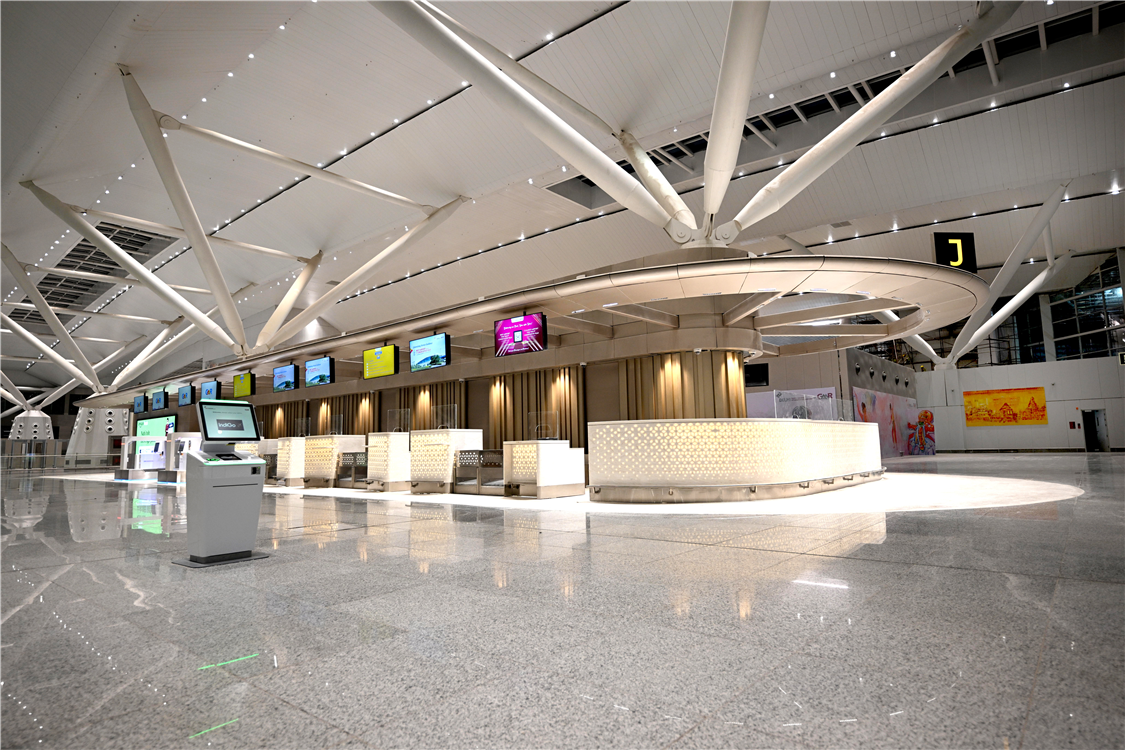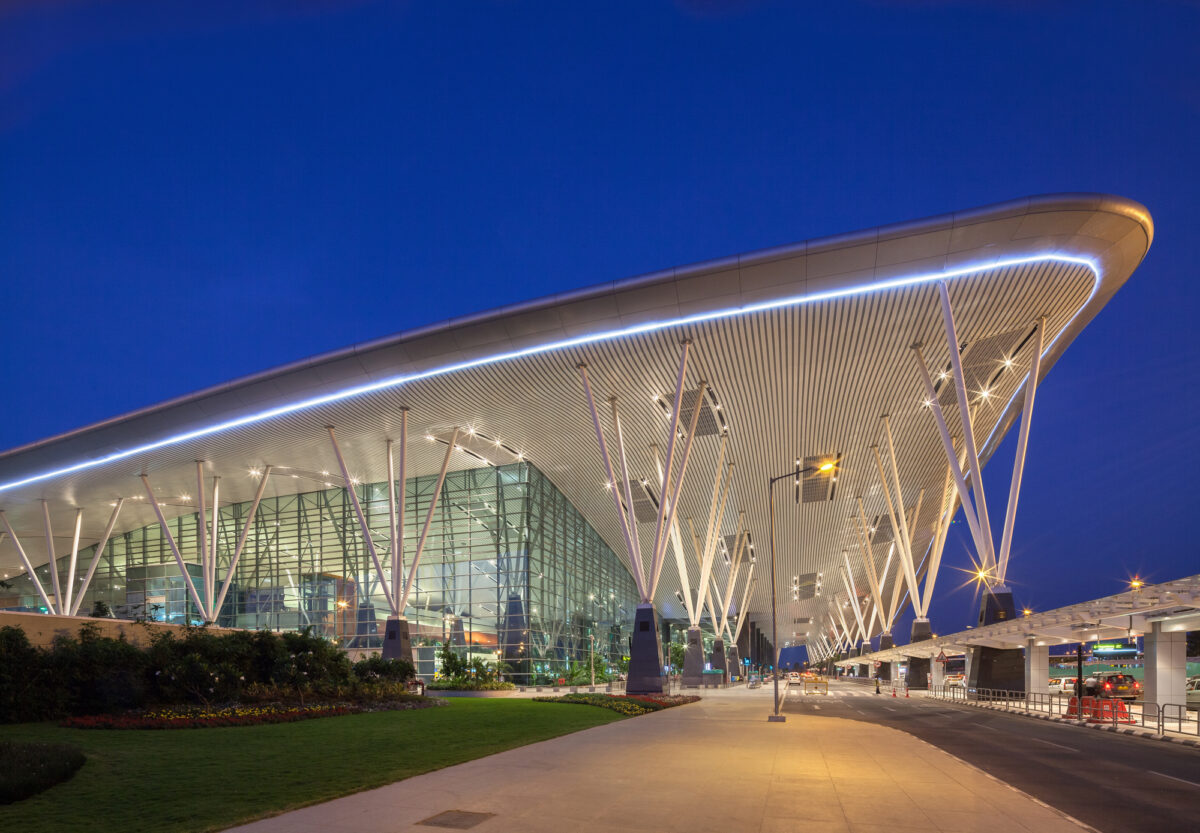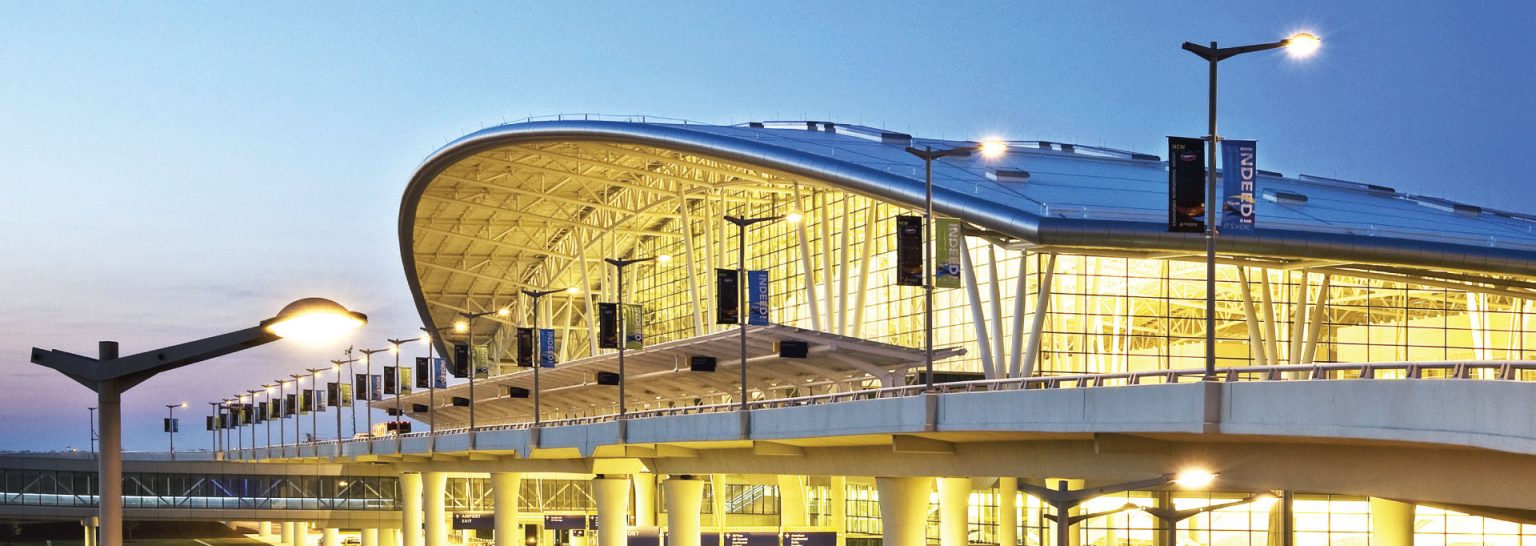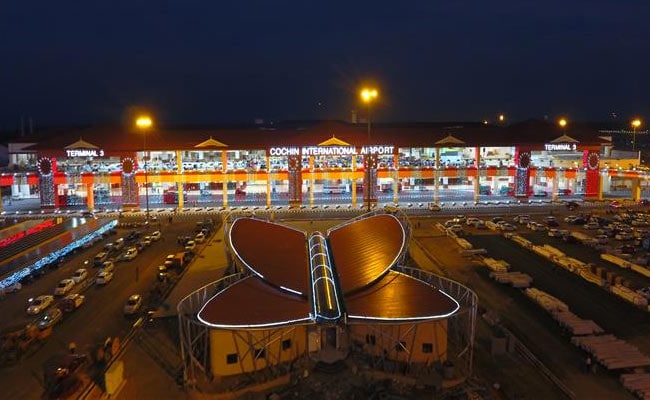India’s aviation sector has soared to new heights in recent years, driven by the country’s economic expansion and the increasing mobility of its people. With a mix of bustling hubs and serene gateways, the country’s largest airports play a crucial role in connecting millions of passengers. Let’s take a closer look at the top 10 largest airports in India, ranked by size and passenger traffic, and explore what makes each one special.
1. Indira Gandhi International Airport (DEL) – Delhi

- Size: 5,106 acres
- Passenger Traffic: Over 70 million annually
- Highlights: As India’s busiest airport, IGI Airport is a marvel of modern engineering and efficiency. The expansive Terminal 3 offers every conceivable amenity, making it a vital hub for international and domestic flights. With three runways and extensive cargo facilities, it connects Delhi to the world.
2. Chhatrapati Shivaji Maharaj International Airport (BOM) – Mumbai

- Size: 1,850 acres
- Passenger Traffic: Around 50 million annually
- Highlights: Mumbai’s airport is a blend of style and functionality. The beautifully designed Terminal 2, adorned with artwork, handles most international flights, while Terminal 1 caters to domestic travel. It’s a key gateway for international visitors arriving in India’s financial capital.
3. Kempegowda International Airport (BLR) – Bengaluru

- Size: 4,000 acres
- Passenger Traffic: Approximately 33 million annually
- Highlights: Located in Devanahalli, this rapidly expanding airport is essential for India’s tech hub, Bengaluru. With a large terminal and two runways, Kempegowda Airport is growing fast, with new expansions underway to meet rising demand.
4. Chennai International Airport (MAA) – Chennai

- Size: 1,283 acres
- Passenger Traffic: Over 22 million annually
- Highlights: Chennai Airport is the main hub for South India, balancing a large volume of both domestic and international flights. Currently, it has two adjacent terminals, with a new integrated terminal under construction to enhance capacity and passenger experience.
5. Rajiv Gandhi International Airport (HYD) – Hyderabad

- Size: 5,495 acres
- Passenger Traffic: About 21 million annually
- Highlights: This airport in Shamshabad is renowned for its modern amenities and efficient service. It’s a significant hub for flights to the Middle East and Southeast Asia, with a single terminal catering to both domestic and international travelers.
6. Cochin International Airport (COK) – Kochi

- Size: 1,300 acres
- Passenger Traffic: Around 11 million annually
- Highlights: Known as the world’s first fully solar-powered airport, Cochin International Airport is a major gateway to Kerala. It handles a considerable volume of international flights, particularly to the Middle East, reflecting Kerala’s large expatriate population.
7. Netaji Subhas Chandra Bose International Airport (CCU) – Kolkata
- Size: 1,641 acres
- Passenger Traffic: Approximately 20 million annually
- Highlights: Serving eastern India, Kolkata’s airport is a critical hub for flights to the Northeast and international destinations in Southeast Asia and the Middle East. A new terminal has significantly boosted its capacity.
8. Pune International Airport (PNQ) – Pune

- Size: 1,541 acres
- Passenger Traffic: Over 9 million annually
- Highlights: One of India’s fastest-growing airports, Pune Airport primarily handles domestic flights but is seeing increasing international traffic, especially to the Middle East. Its growth mirrors Pune’s rise as a major business hub.
9. Goa International Airport (GOI) – Dabolim

- Size: 1,700 acres
- Passenger Traffic: Around 8 million annually
- Highlights: Nestled in the scenic state of Goa, this airport is crucial for both domestic and international tourists. It operates as a civil enclave within a military airbase, adding a unique twist to its operations.
10. Sardar Vallabhbhai Patel International Airport (AMD) – Ahmedabad

- Size: 1,124 acres
- Passenger Traffic: Over 11 million annually
- Highlights: Serving the vibrant city of Ahmedabad and the state of Gujarat, this airport features two terminals—one for domestic and one for international flights. Known for its efficient service, it’s experiencing growing passenger numbers year on year.
Conclusion
India’s largest airports are more than just transit points; they are bustling microcosms of the country’s dynamic growth and cultural diversity. Each airport, with its unique blend of size, passenger volume, and distinctive features, plays a crucial role in connecting India internally and with the rest of the world. As the nation continues to grow, these airports will undoubtedly evolve, offering even more enhanced travel experiences for millions of passengers.




1 Comment
I’m not sure where you aare getting your info, but good topic.
I needs to spend some time learning more or understanding more.
Thanks foor magnificent information I waas looking for
this information for my mission. https://www.waste-ndc.pro/community/profile/tressa79906983/